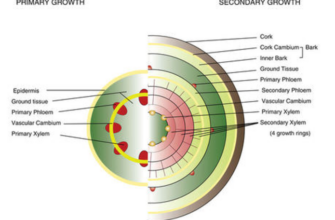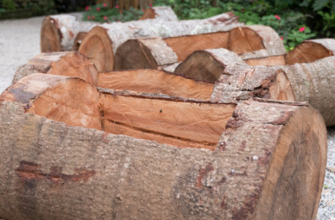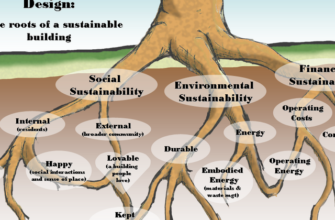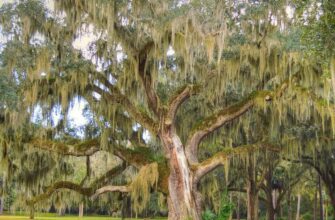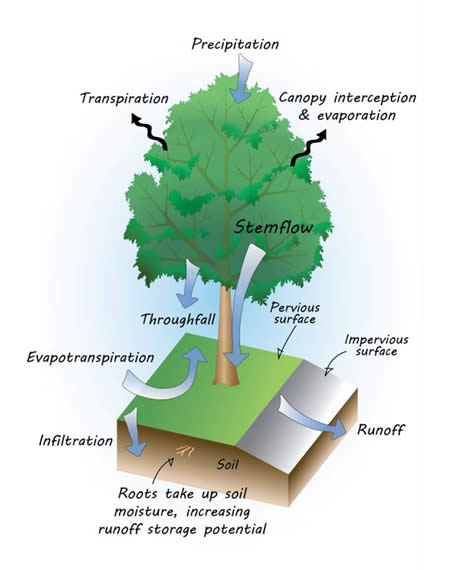
- Trees Tame Stormwater
- The Importance of Trees in Stormwater Management
- Trees reduce stormwater runoff
- Trees improve water quality
- Trees enhance soil infiltration
- Trees provide shade and reduce evaporation
- Trees mitigate the urban heat island effect
- Trees reduce erosion and sedimentation
- Trees act as natural filters
- Trees increase biodiversity
- Best Tree Species for Stormwater Management
- Native tree species
- Trees with deep root systems
- Trees with water-absorbing capabilities
- Trees with dense canopies
- Trees with high transpiration rates
- Implementing Trees in Sustainable Drainage Systems
- Incorporating trees in green infrastructure projects
- FAQ:
- How do trees help manage stormwater?
- What are some benefits of using trees for stormwater management?
Trees Tame Stormwater
Stormwater runoff is a major challenge in urban areas, as it can lead to flooding, erosion, and pollution of water bodies. However, nature has provided us with a solution to this problem: trees. Trees have the remarkable ability to absorb and tame stormwater, making them an essential component of sustainable drainage systems.
When it rains, trees act as natural sponges, soaking up rainwater through their roots. Their extensive root systems help to reduce the volume and velocity of stormwater runoff, preventing it from overwhelming drainage systems. This not only reduces the risk of flooding, but also helps to replenish groundwater supplies.
Furthermore, trees play a crucial role in reducing the pollutants carried by stormwater. As rainwater flows over impervious surfaces such as roads and parking lots, it picks up various pollutants such as oil, chemicals, and sediment. However, when stormwater passes through a green infrastructure that includes trees, these pollutants are filtered out by the trees’ leaves, branches, and root systems. This natural filtration process helps to improve the quality of water in our environment.
In addition to their stormwater management benefits, trees provide numerous other environmental benefits. They help to mitigate the urban heat island effect by providing shade and cooling the surrounding air. They also improve air quality by absorbing carbon dioxide and releasing oxygen. Moreover, trees enhance the aesthetic value of urban areas, creating a greener and more pleasant environment for residents and visitors.
In conclusion, trees are a vital component of sustainable drainage systems. Their ability to absorb and tame stormwater, as well as their numerous other environmental benefits, make them an invaluable asset in our efforts to create more resilient and eco-friendly cities. By incorporating trees into our urban landscapes, we can effectively manage stormwater and create a greener, healthier future for our communities.
The Importance of Trees in Stormwater Management
When it comes to managing rainwater and stormwater, trees play a crucial role in reducing the impact of heavy rainfall and taming the flow of water. These green giants are not only a beautiful addition to the environment, but they also have the ability to absorb large amounts of water.
Trees have a remarkable capacity to reduce stormwater runoff by intercepting rainwater on their leaves, branches, and trunks. The leaves act as a natural barrier, slowing down the flow of water and allowing it to be absorbed into the soil. This helps to prevent flooding and erosion, as well as reducing the amount of pollutants that are carried into our waterways.
One of the main benefits of trees in stormwater management is their ability to absorb and store water. The roots of trees can reach deep into the ground, allowing them to take up large amounts of water and store it in the soil. This helps to recharge groundwater supplies and maintain a healthy water balance in the environment.
In addition to their water-absorbing capabilities, trees also provide shade and cool the surrounding environment. This can help to reduce the temperature of urban areas, known as the “urban heat island effect,” which can further alleviate the impact of heavy rainfall and reduce the need for energy-intensive cooling systems.
Overall, trees are a valuable asset in stormwater management. They not only beautify our surroundings, but they also provide important ecological services that help to protect our environment and promote sustainable drainage systems.
Trees reduce stormwater runoff
Green infrastructure is an essential component of sustainable drainage systems. Trees play a crucial role in managing stormwater by reducing the amount of rainwater that runs off paved surfaces and enters the drainage system.
Trees have the unique ability to absorb and store large amounts of rainwater through their roots, leaves, and branches. This process helps to slow down the flow of stormwater, allowing it to be gradually released into the environment. By doing so, trees help to prevent flooding and erosion, and protect water quality by filtering out pollutants.
The presence of trees in urban areas can significantly tame stormwater runoff. They act as natural sponges, capturing and retaining rainwater, which would otherwise contribute to the overloading of drainage systems. Trees also provide shade, which reduces the temperature of paved surfaces, further minimizing the amount of stormwater runoff.
Furthermore, the roots of trees help to improve soil structure, allowing it to better absorb and retain water. The canopy of trees also intercepts rainfall, reducing the impact of raindrops on the ground and preventing soil erosion. This combination of factors makes trees a valuable asset in managing stormwater and promoting a healthier environment.
Trees improve water quality
Trees play a vital role in improving the quality of water in the environment. Their green foliage and extensive root systems help to tame and manage rainwater and stormwater runoff, making them a sustainable solution for drainage.
One of the ways trees improve water quality is by absorbing and filtering rainwater and stormwater. The roots of trees act like natural sponges, soaking up water and capturing pollutants such as sediment, nutrients, and chemicals. This process helps to reduce the amount of pollutants that enter our waterways, ensuring cleaner and healthier water for both humans and wildlife.
In addition to absorbing and filtering stormwater, trees also help to reduce the volume and velocity of runoff. Their canopies intercept raindrops, slowing down the flow of water and preventing erosion. This is especially important in urban areas where impervious surfaces, such as roads and parking lots, can cause excessive runoff and flooding.
Furthermore, trees provide shade and cooling effects, which can help to regulate water temperature. This is important for aquatic ecosystems, as temperature fluctuations can negatively impact the health and survival of aquatic organisms. By providing shade, trees help to maintain a more stable and suitable environment for aquatic life.
In summary, trees are a valuable asset when it comes to improving water quality. Their ability to absorb, filter, and reduce stormwater runoff makes them an essential component of sustainable drainage systems. By planting and preserving trees, we can ensure cleaner and healthier water for ourselves and future generations.
Trees enhance soil infiltration
Trees play a crucial role in enhancing sustainable drainage systems by improving soil infiltration. The roots of trees create channels in the soil that allow water to penetrate and be absorbed. This helps to reduce the amount of stormwater runoff and allows the soil to act as a natural filter for pollutants.
When rainwater falls on paved surfaces or compacted soil, it tends to run off quickly, carrying pollutants and sediment with it. However, when trees are present, their roots help to break up compacted soil and create a more porous environment. This allows rainwater to infiltrate into the ground, where it can be absorbed by tree roots and the surrounding soil.
The presence of trees also helps to reduce the amount of runoff by increasing the overall storage capacity of the soil. The roots of trees act like sponges, absorbing and storing water during rainfall events. This stored water can then be slowly released back into the environment, reducing the risk of flooding and erosion.
In addition to enhancing soil infiltration, trees also provide other benefits to the environment. They help to cool the surrounding area by providing shade and reducing the heat island effect. Trees also improve air quality by absorbing pollutants and releasing oxygen. These additional benefits make trees a valuable asset in sustainable drainage systems.
Trees provide shade and reduce evaporation
Trees play a crucial role in managing rainwater and maintaining a healthy green environment. Not only do trees absorb and store rainwater through their roots, but they also provide shade, which helps to reduce evaporation. This is important because evaporation can lead to the loss of precious water resources, especially in areas with hot and dry climates.
When it rains, trees act as natural sponges, absorbing and retaining rainwater in their roots and soil. This helps to prevent stormwater runoff, which can contribute to flooding and erosion. By absorbing rainwater, trees help to tame stormwater and promote sustainable drainage, allowing the water to slowly filter into the ground rather than overwhelming drainage systems.
In addition to their ability to absorb rainwater, trees also provide shade, creating a cooler microclimate underneath their canopy. This shade helps to reduce evaporation by blocking direct sunlight from reaching the ground and preventing the water from quickly turning into vapor. By reducing evaporation, trees help to conserve water and maintain a more balanced moisture level in the environment.
The shade provided by trees not only benefits the soil and water, but it also has a positive impact on the surrounding ecosystem. Many plants and organisms thrive in shaded areas, and the cooler temperatures created by trees can help to protect sensitive species from heat stress. Furthermore, the shade provided by trees can also benefit humans by creating more comfortable outdoor spaces and reducing the need for air conditioning.
In conclusion, trees are essential for managing rainwater and maintaining a sustainable drainage system. Their ability to absorb and store rainwater, as well as provide shade to reduce evaporation, plays a crucial role in taming stormwater and preserving water resources. By planting and preserving trees, we can contribute to a greener and more sustainable environment.
Trees mitigate the urban heat island effect
The urban heat island effect refers to the phenomenon where urban areas experience higher temperatures compared to surrounding rural areas. This is primarily due to the abundance of heat-absorbing materials such as concrete and asphalt in cities. However, trees play a crucial role in taming this effect by reducing the overall temperature and creating a more comfortable environment.
Trees have the ability to absorb and store large amounts of rainwater and stormwater through their roots and leaves. This process helps to cool the surrounding area as the water evaporates from the tree’s surface, reducing the temperature and providing natural air conditioning. Additionally, trees provide shade, which further helps to lower the temperature in urban areas.
In addition to their cooling effect, trees also contribute to a sustainable and green environment. They act as natural filters, improving air quality by absorbing pollutants and releasing oxygen. This not only benefits human health but also supports the overall well-being of the ecosystem.
Furthermore, trees play a crucial role in managing stormwater runoff. Their roots help to absorb excess water, reducing the risk of flooding and erosion. This sustainable drainage solution helps to prevent damage to infrastructure and protects the environment.
In conclusion, trees are essential in mitigating the urban heat island effect. Their ability to reduce temperatures, absorb rainwater and stormwater, and create a sustainable and green environment make them a valuable asset in urban planning and development.
Trees reduce erosion and sedimentation
One of the sustainable benefits of trees is their ability to absorb and tame stormwater runoff, which helps to reduce erosion and sedimentation. When it rains, the leaves and branches of trees act as a natural canopy, intercepting rainfall and slowing down its descent to the ground. This allows the rainwater to be absorbed by the soil, instead of running off and causing erosion.
Trees play a crucial role in maintaining a green and healthy environment. Their roots help to stabilize the soil, preventing it from being washed away by the force of the rainwater. The roots also act as channels, allowing the water to penetrate deeper into the ground and recharge the underground water table.
Moreover, the dense network of roots created by trees helps to reduce the velocity of stormwater runoff, preventing it from carrying away sediment and pollutants. The roots also trap and filter out pollutants, such as sediment, nutrients, and chemicals, before they can reach nearby water bodies.
In addition to reducing erosion and sedimentation, trees provide numerous other benefits for sustainable drainage. They help to regulate the water cycle by releasing moisture into the atmosphere through a process called transpiration. This helps to cool the environment and reduce the risk of flooding during heavy rainfall.
Overall, trees are a vital component of sustainable drainage systems. They not only reduce erosion and sedimentation but also contribute to a greener and healthier environment by absorbing rainwater, stabilizing the soil, and filtering pollutants. By planting and preserving trees, we can ensure a more sustainable and resilient approach to managing stormwater runoff.
Trees act as natural filters
The sustainable benefits of trees in managing stormwater are numerous. When it rains, trees help to reduce the amount of rainwater that enters the stormwater system. The leaves of trees intercept rainfall, slowing down its flow and allowing it to be absorbed into the ground. This helps to prevent stormwater runoff, which can lead to flooding and erosion.
Trees also play a crucial role in improving the quality of stormwater. As rainwater flows through the tree canopy, it is filtered and cleansed. The leaves and branches of trees act as natural filters, capturing pollutants such as dust, dirt, and debris. This reduces the amount of pollutants that enter our waterways and helps to protect the environment.
In addition to filtering stormwater, trees also have the ability to absorb and store large amounts of water. Their extensive root systems act like sponges, soaking up excess rainwater and preventing it from overwhelming the stormwater system. This helps to regulate the flow of stormwater and reduce the risk of flooding.
Furthermore, trees provide a green infrastructure that helps to cool and shade urban areas. This reduces the heat island effect, where urban areas become significantly hotter than surrounding rural areas. By cooling the environment, trees help to lower the demand for energy-intensive air conditioning, resulting in reduced energy consumption and greenhouse gas emissions.
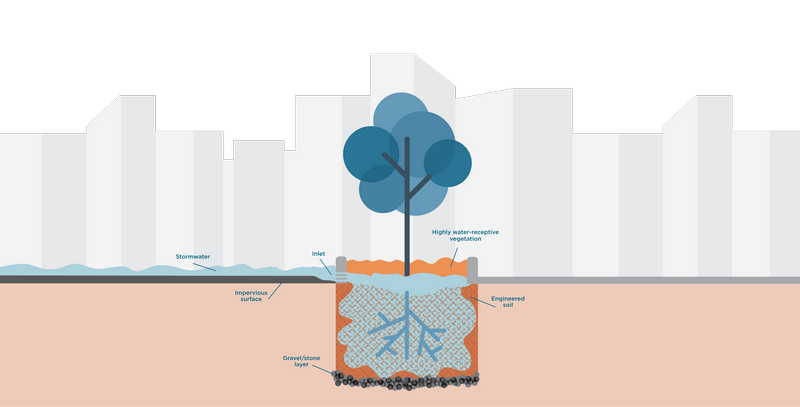
In summary, trees are nature’s solution for sustainable drainage. They act as natural filters, reducing the amount of stormwater runoff and improving its quality. They also absorb and store water, helping to regulate the flow of stormwater and prevent flooding. Additionally, trees provide numerous environmental benefits, such as cooling and shading urban areas. By recognizing the importance of trees in managing stormwater, we can create a more sustainable and resilient future.
Trees increase biodiversity
Trees play a crucial role in increasing biodiversity in urban environments. By providing a green and sustainable habitat, trees attract a variety of plant and animal species, creating a diverse ecosystem. This is especially important in urban areas, where concrete and asphalt dominate the landscape.
One of the ways trees contribute to biodiversity is by providing a habitat for birds, insects, and other animals. The branches and leaves of trees offer shelter and nesting sites, while the fruits and seeds provide a source of food. This attracts a wide range of species, including songbirds, butterflies, and squirrels, which contribute to the overall health and balance of the ecosystem.
In addition to providing habitat, trees also absorb rainwater, reducing the risk of flooding and erosion. The roots of trees act as natural filters, absorbing pollutants and purifying the water before it reaches the groundwater. This not only benefits the environment, but also improves the quality of water in rivers and streams.
Furthermore, trees contribute to the overall aesthetics of an environment, making it more inviting and pleasant. They provide shade, which helps to reduce the heat island effect in urban areas, and create a calming and peaceful atmosphere. This not only benefits humans, but also provides a suitable environment for a wide range of plant species to thrive.
In summary, trees play a vital role in increasing biodiversity in urban environments. They provide a green and sustainable habitat for a variety of plant and animal species, absorb rainwater, and improve the overall aesthetics of the environment. By planting and preserving trees, we can help to tame stormwater and create a more sustainable and vibrant ecosystem.
Best Tree Species for Stormwater Management
In the quest for sustainable drainage solutions, trees play a crucial role in managing stormwater. Their ability to absorb and store large amounts of water makes them an invaluable green infrastructure element in urban environments. When it comes to selecting the best tree species for stormwater management, several factors need to be considered.
First and foremost, the tree species should have a deep and extensive root system that can effectively absorb and retain stormwater. Trees with shallow roots may not be as effective in managing heavy rainfall events. Additionally, the tree should have a high tolerance for wet conditions, as it will be constantly exposed to rainwater and runoff.
Some tree species that are well-suited for stormwater management include the Willow Oak (Quercus phellos), Red Maple (Acer rubrum), and Bald Cypress (Taxodium distichum). These trees have deep root systems that can absorb and store significant amounts of stormwater, helping to prevent flooding and reduce the burden on drainage systems.
Furthermore, the tree species should be native to the area, as they are better adapted to the local climate and soil conditions. Native trees are more likely to thrive and provide long-term stormwater management benefits. They also support local ecosystems and biodiversity.
In conclusion, selecting the best tree species for stormwater management is essential for creating sustainable and effective drainage systems. Trees that can absorb and store stormwater, have deep root systems, and are native to the area are the ideal choices. By incorporating these trees into urban environments, we can tame stormwater and create a greener, more resilient environment.
Native tree species
Native tree species play a crucial role in taming rainwater and stormwater, making them an essential component of sustainable drainage systems. These trees have adapted to the local environment and are well-suited to handle the amount of rainfall in the area.
When it rains, the leaves of native trees act as natural sponges, soaking up the water and reducing the amount of stormwater runoff. This helps prevent flooding and erosion, as well as reduces the strain on traditional drainage systems.
Native tree species also contribute to a greener and more sustainable environment. They provide shade, which helps to cool the surrounding area and reduce the need for energy-intensive air conditioning. Additionally, these trees absorb carbon dioxide and release oxygen, improving air quality and mitigating the effects of climate change.
By planting a variety of native tree species, we can create a diverse and resilient ecosystem that is better equipped to handle heavy rainfall and storm events. These trees not only help to reduce the impact of stormwater, but also provide habitat for wildlife, improve soil health, and enhance the overall beauty of our landscapes.
Trees with deep root systems
Trees with deep root systems play a crucial role in stormwater management and are an essential component of sustainable drainage systems. These trees have the ability to tame and control stormwater runoff, mitigating the impact of heavy rainfalls and reducing the risk of flooding.
One of the key benefits of trees with deep root systems is their ability to absorb and retain large amounts of rainwater. The deep roots of these trees act like underground sponges, allowing them to store excess water and prevent it from overwhelming the drainage system. This natural absorption process helps to reduce the amount of stormwater that enters the sewer system, thereby minimizing the risk of overflow and pollution.
Furthermore, the presence of trees with deep root systems can also help to improve the overall environment. These trees provide shade, improve air quality, and create a more pleasant and green urban landscape. They act as natural filters, removing pollutants from the air and capturing harmful particles, thus contributing to a healthier and more sustainable environment.
In addition to their stormwater management benefits, trees with deep root systems also offer other advantages. Their extensive root networks help to stabilize soil, preventing erosion and reducing the risk of landslides. These trees also provide habitat and food for various wildlife species, promoting biodiversity in urban areas.
In conclusion, trees with deep root systems are an integral part of sustainable drainage systems. They have the ability to absorb and control stormwater, reduce the risk of flooding, and provide numerous environmental benefits. Incorporating these trees into urban landscapes can help create a more resilient and sustainable future.
Trees with water-absorbing capabilities
Trees are not only beautiful and provide shade, but they also play a crucial role in sustainable drainage systems. Their ability to absorb and store water makes them a valuable asset in managing stormwater runoff.
When it rains, trees act as natural sponges, soaking up rainwater and reducing the amount of runoff that flows into drains and rivers. Their extensive root systems help to tame stormwater by absorbing and storing large volumes of water, preventing flooding and erosion.
Not only do trees help to control stormwater, but they also contribute to a greener environment. Through a process called transpiration, trees release water vapor into the air, which helps to cool the surrounding area and improve air quality. This natural cooling effect reduces the need for energy-intensive air conditioning, making trees an eco-friendly solution for urban areas.
Furthermore, trees can reduce the impact of heavy rainfall on infrastructure by intercepting rainwater before it reaches the ground. The leaves and branches of trees act as a natural canopy, capturing raindrops and allowing them to slowly drip down to the ground. This process not only reduces the force of rainfall but also helps to filter out pollutants, improving the quality of water that eventually enters our rivers and streams.
In addition to their water-absorbing capabilities, trees provide numerous other benefits to the environment. They help to combat climate change by sequestering carbon dioxide, provide habitat for wildlife, and enhance the aesthetic value of urban areas. Therefore, incorporating trees into sustainable drainage systems is a win-win solution for both the environment and our communities.
Trees with dense canopies
Trees with dense canopies play a crucial role in reducing stormwater runoff and managing rainwater in a sustainable and environmentally friendly way. The green cover provided by these trees acts as a natural sponge, absorbing and slowing down the flow of rainwater.
The dense foliage of these trees helps to intercept rainfall, preventing it from directly hitting the ground and reducing the impact of heavy rain on the environment. The leaves and branches of these trees act as a barrier, allowing rainwater to be captured and retained within the canopy.
In addition to reducing stormwater runoff, trees with dense canopies also provide numerous other benefits. They help to improve air quality by absorbing pollutants and releasing oxygen. They provide shade, reducing the urban heat island effect and lowering energy consumption. They also provide habitat and food for wildlife, contributing to biodiversity.
Trees with dense canopies are an essential component of sustainable drainage systems, helping to manage stormwater in an efficient and natural way. By taming stormwater and reducing runoff, these trees contribute to the overall health and resilience of the environment.
Trees with high transpiration rates
Trees play a crucial role in managing stormwater and creating a sustainable environment. One of the ways they do this is through their ability to reduce the impact of rainwater runoff. Trees with high transpiration rates can absorb large amounts of water through their roots and release it into the atmosphere through their leaves. This process helps to tame stormwater by reducing the amount of runoff that enters our drainage systems.
The transpiration process is important for sustainable drainage because it helps to prevent flooding and erosion. When trees absorb rainwater, they also take up pollutants and contaminants that may be present in the water. This natural filtration system helps to improve water quality and protect our ecosystems.
Furthermore, trees with high transpiration rates can also help to cool the environment. As water evaporates from their leaves, it creates a cooling effect, reducing the temperature in urban areas. This is particularly important in cities where heat islands can form due to the high concentration of buildings and pavement.
Overall, trees with high transpiration rates are an essential component of sustainable drainage systems. They help to reduce the impact of stormwater runoff, improve water quality, and create a more comfortable and livable environment. By planting and preserving these trees, we can ensure a healthier and more sustainable future for our communities.
Implementing Trees in Sustainable Drainage Systems
Trees play a crucial role in sustainable drainage systems by helping to manage rainwater and stormwater in a green and environmentally friendly way. By planting trees strategically, we can tame the flow of water and prevent flooding in urban areas.
One of the key benefits of implementing trees in sustainable drainage systems is their ability to absorb large amounts of water. Tree roots act as natural filters, capturing and storing rainwater. This helps to reduce the volume of stormwater runoff, preventing it from overwhelming drainage systems and causing damage to infrastructure.
Furthermore, trees provide shade and reduce the temperature of urban areas, which can help to mitigate the effects of heatwaves and reduce the demand for air conditioning. This not only improves the comfort of residents but also reduces energy consumption and greenhouse gas emissions.
Another advantage of using trees in sustainable drainage systems is their ability to improve water quality. As rainwater infiltrates the soil, tree roots help to filter out pollutants and contaminants, preventing them from entering waterways. This helps to protect the health of ecosystems and ensure a clean and safe water supply.
In addition to their practical benefits, trees also bring aesthetic and social value to urban environments. They create green spaces that improve the quality of life for residents, provide habitat for wildlife, and contribute to a sense of community. By integrating trees into sustainable drainage systems, we can create more sustainable and resilient cities for future generations.
Incorporating trees in green infrastructure projects
When it comes to stormwater management, green infrastructure projects are becoming increasingly popular. These projects aim to reduce the impact of stormwater runoff on the environment by using natural systems to absorb and filter rainwater. One key component of green infrastructure projects is the incorporation of trees.
Trees play a crucial role in sustainable drainage because of their ability to absorb and store large amounts of water. Their extensive root systems act as natural sponges, allowing them to capture and retain rainwater. This helps to reduce the volume of stormwater runoff and prevent flooding in urban areas.
Not only do trees help to manage stormwater, but they also provide a range of other benefits. They improve air quality by absorbing pollutants and releasing oxygen, making the surrounding environment healthier for both humans and wildlife. Additionally, trees provide shade, reducing the urban heat island effect and lowering energy consumption for cooling buildings.
When incorporating trees into green infrastructure projects, it is important to consider their location and species. Trees should be strategically placed to maximize their stormwater management capabilities. Species with deep root systems and high water absorption rates are ideal for these projects.
In conclusion, trees are an essential component of green infrastructure projects for stormwater management. They help to reduce the impact of stormwater runoff, improve air quality, and provide numerous other benefits. By incorporating trees into sustainable drainage systems, we can create a more environmentally-friendly and resilient urban landscape.
FAQ:
How do trees help manage stormwater?
Trees help manage stormwater by absorbing rainwater through their roots, which reduces the amount of runoff that enters the stormwater system. The leaves and branches of trees also help to slow down the flow of rainwater, allowing it to be absorbed into the ground more gradually.
What are some benefits of using trees for stormwater management?
Using trees for stormwater management has several benefits. Firstly, trees help to reduce the amount of stormwater runoff, which can help prevent flooding and erosion. Secondly, trees improve water quality by filtering pollutants and sediments from stormwater runoff. Lastly, trees provide shade and cooling effects, which can help mitigate the urban heat island effect.


